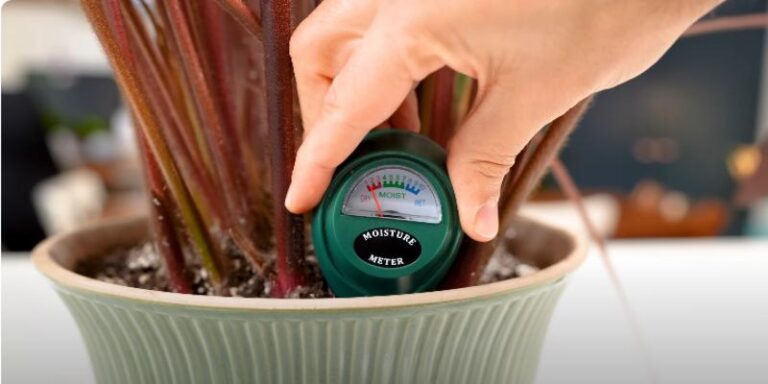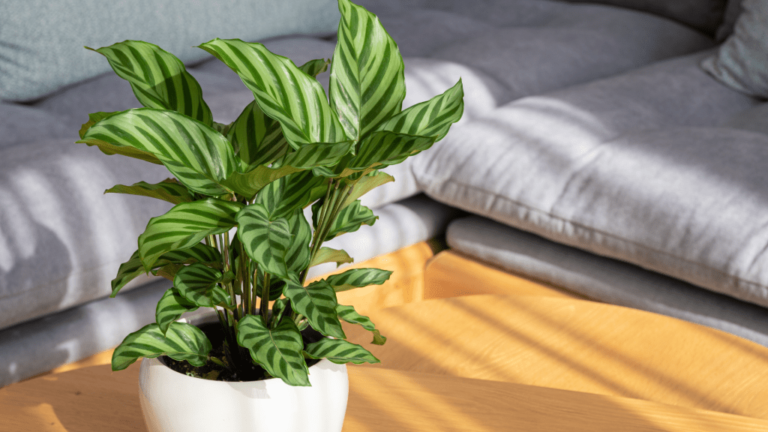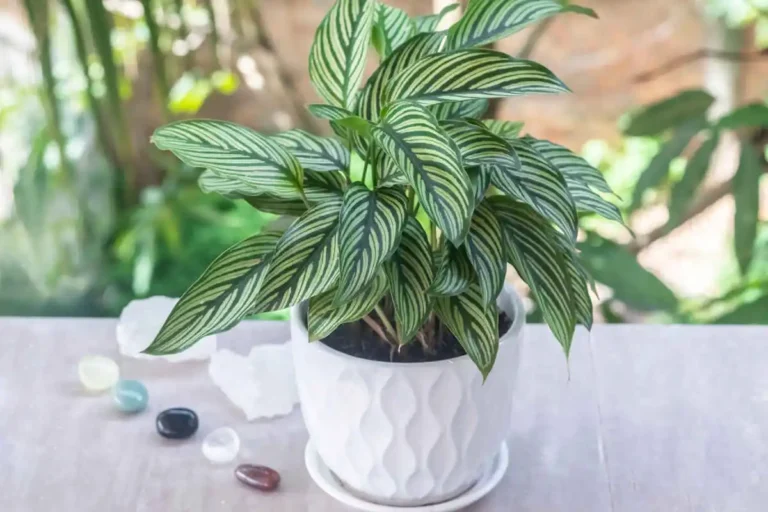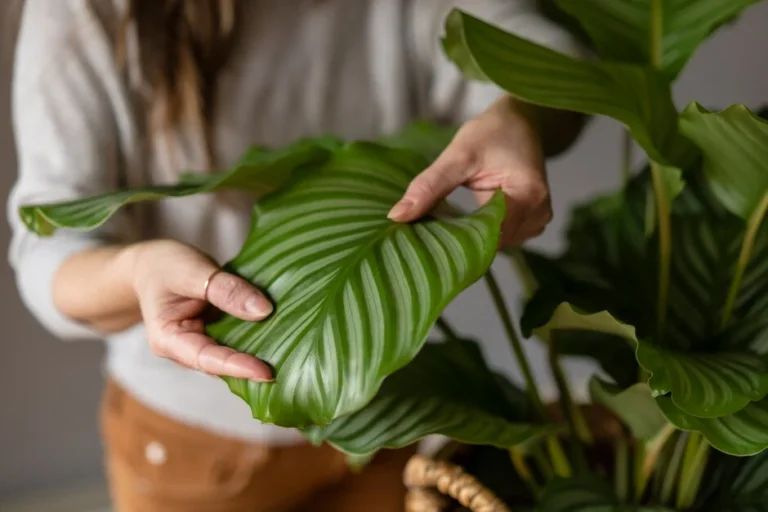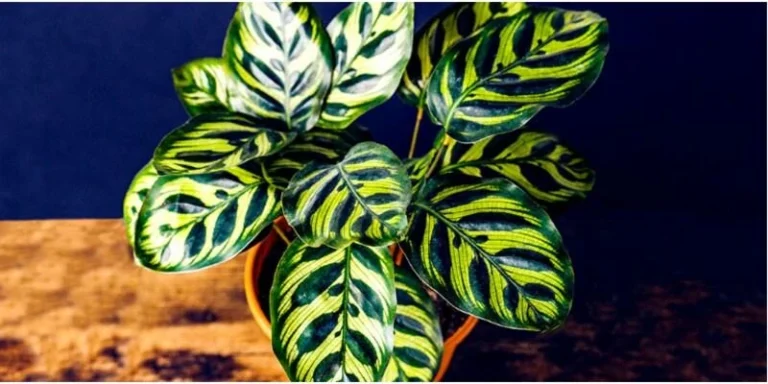What is Calathea Plant? How do you grow and care for Calathea Plants?
Calathea plant, also commonly known as the cathedral, peacock, rattlesnake, or zebra plant, is a popular houseplant that is easy to care for and used for indoor decorations and landscaping due to its stunning foliage. Its beautiful foliage of white, bright veins against green, red, and cream leaves brightens up offices, lobbies, meeting rooms, and other interior areas.
These plants are native to Brazil and the tropical Americas and can be grown indoors and outdoors when they receive bright indirect light, high humidity, warm temperatures, and regular watering. However, other aspects make them challenging to grow and care for.
In this detailed guide, we will cover everything you need to know about what is Calathea plant, including its varieties, care and growth requirements, propagation, uses, and more. So, keep reading our blog post until the last word.

What is the Calathea Plant?
The Calathea plant is a popular perennial in the Marantaceae family, a family of flowering plants from tropical areas. It is known for its stunning foliage and is used for decorative purposes in homes and offices, as it prefers to grow under bright, indirect light. The plant has different types, some of which are easier to care for than others.
The colorful calathea leaves are used for handicrafts and food wrapping. Lanceolate leaves are used for weaving baskets, while broader leaves are used for wrapping food. Throughout the day, calatheas move their leaves in a pattern known as nyctinasty. This phenomenon allows these plants to absorb as many sun rays as possible.
Calatheas blooms in the summer with yellow, purple, and white flowers. The flowers are asymmetrical, with three petals and three free sepals. Bracts are often more attractive than Calathea flowers.
What Are the Popular Types/Species of Calathea Plants?
Below are the types or species of Calathea plants available for indoor use.
Calathea Lancifolia (The Rattlesnake Plant)
The variety has slender green leaves with dark green blotches and purple undersides.
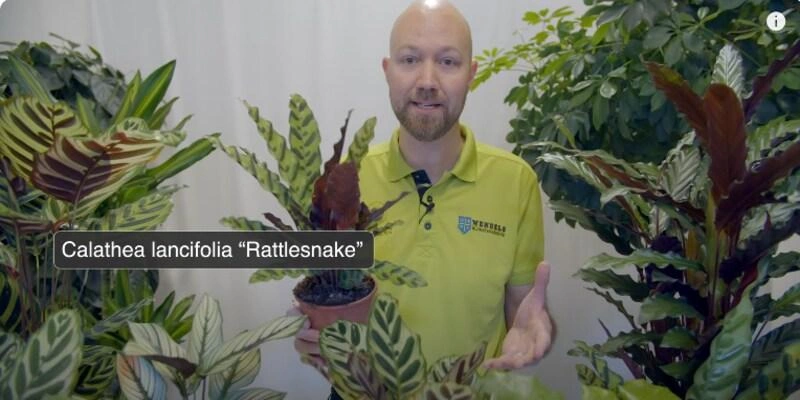
Calathea Makoyana (Peacock Plant)
This type has dark green leaves with cream, purple, and pink tones. Its stems are red in appearance.

Calathea Louisae
Calathea louisae has dark green leaves, wave edges, and light green patches down the midvein.
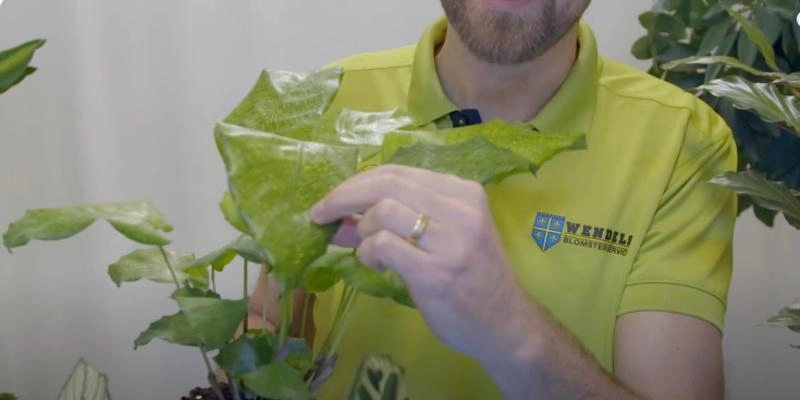
Calathea Ornata (Pin Stripe)
The plant has dark green, glossy leaves with pink pinstripes.
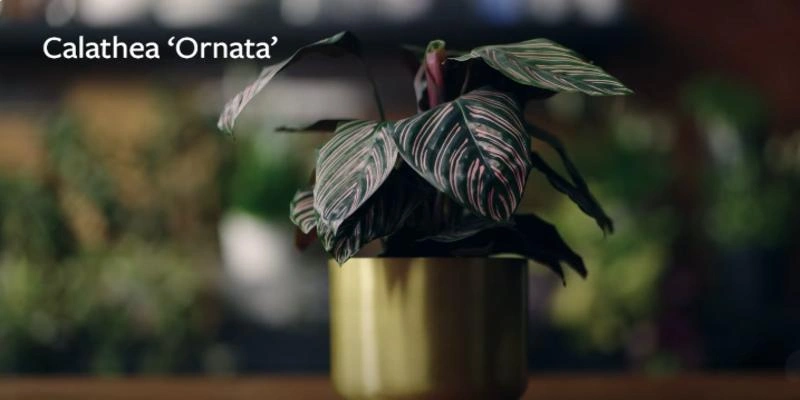
Calathea Zebrina (Zebra Plant)
This Calathea type has stripy green markings on the tops of the leaves, while the undersides are bright, rich purple.
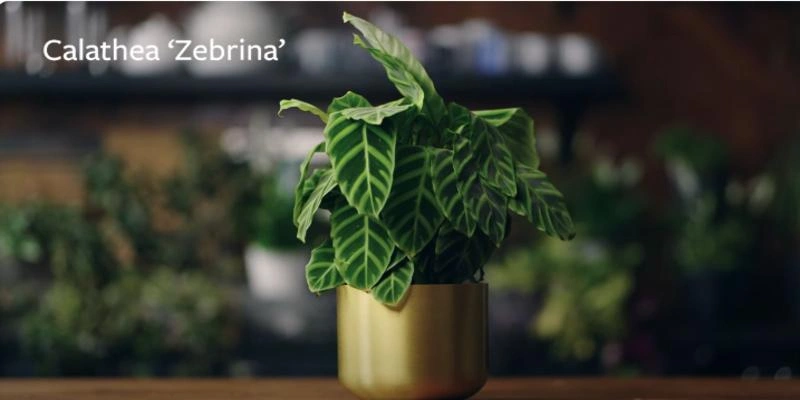
Calathea Crocata (Eternal Flame)
Calathea crocata has plain leaves with striking, upright-facing, bright lobster-colored flowers.
How to Grow and Care for Your Calatheas Indoors
Calathea plants are relatively easy to care for and can be planted in various planters and locations. It means you can place them in a variety of locations.
Also check How to Care for a Calathea Plant?
Some of the key care requirements for most Calathea species include:
Calathea Plants Need High Humidity
Since calathea originate in a more humid environment, they thrive when at least 50% high humidity level is provided. Their wide, green leaves help them absorb moisture through the air.

When grown indoors, you can increase humidity levels using:
How Often Should I Water Calathea Plants?
Calathea plants want regular watering for proper growth but don’t want to sit in soggy soil. To check the watering requirements of your calatheas:
If you have only tap water available, set the tap water out overnight in a jug to allow chlorine to dissipate before watering.
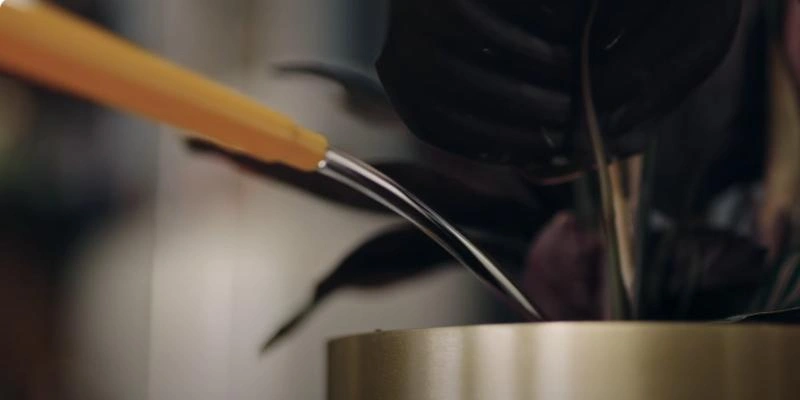
Also check When and How Often Should I Water Calathea Plants?
Temperature Requirements
Calaheas cannot tolerate cold temperatures and hates drafts. They like warm temperatures between 65 and 80 degrees Fahrenheit. Temperatures above or below this range can damage plants as they start producing curling leaves.
To maintain ideal temperature ranges for your tropical beauty:
How Much Sunlight Calatheas Need to Thrive?
Calatheas thrive in medium-to-bright indirect light. They can handle low-light situations, but their color and leaf pattern fade. If your Calathea variety has darker leaves, it requires low light to thrive. Keep them away from direct sunlight as it can scorch their leaves and fade their vibrant color.

To ensure ideal lighting,
What is the Best Soil for Calatheas?
The plant is fussy about its soil requirements. It loves to grow in slightly acidic soil with a pH of approximately 6.5. Therefore, choose a soil blend that:
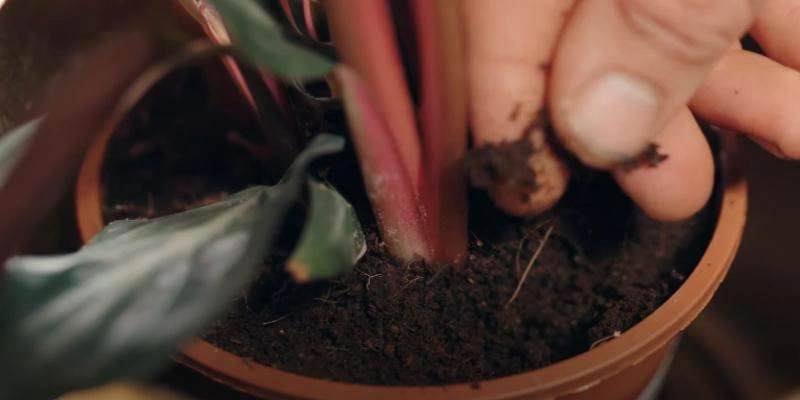
Fertilizer Requirements
Calathea plants don’t need frequent fertilizing, but they produce flowers and grow well when houseplant fertilizer is provided during spring and summer, which are their growing seasons.
For plants with full, glossy leaves,
When to Prune My Calathea Plant?
Calathea plants don’t need much pruning. It only requires pruning brown, yellowing, or dead leaves. You can use:
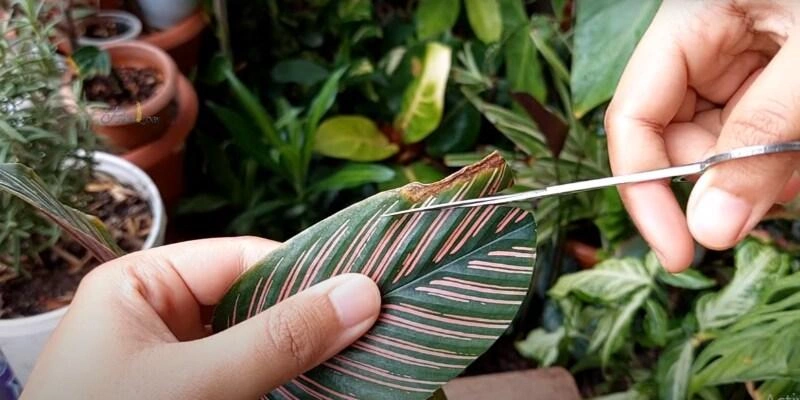
Also check When and How to prune a Calathea Plant?
When to Repot my Calathea?
Repotting your calathea annually is helpful as it allows the plant to grow bigger. Repot your tropical beauties when:
Calatheas Common Problems and How to Fix Them?
Browning Leaf Tips
Tap water contains minerals and chemicals that cause Calathea leaves to turn brown at the tips. If the whole leaf is browning, it could be due to low humidity.
You can fix browning leaves by:
Yellowing Leaves
Yellowing leaves could be due to overwatering. Solve the issue by:
Curling and Droopy Leaves
Calathea plants produce curling and droopy leaves due to a lack of water.
Fix the issue by:
Pest Attack
The humid environment is ideal for fungus gnats and other pests, such as mealy bugs and spider mites. To solve the issue:
Also check Why is your Calathea plant drooping? Reasons and Solution
How to Propagate Calathea Plants?
Calatheas can be propagated by dividing the mature plant into smaller plants. They can also be propagated through seeds, but this method is difficult and not used in practice.
To successfully propagate a Calathea plant:
The newly established Calathea will soon produce new leaves and start growing.
Also check How to propagate a Calathea Plant?
How Long Does It Take for Calatheas To Reach Full Growth?
Calatheas growth depends on the type or species of the plant you want to grow. Like other low-light plants, Calatheas also shows slow growth. Usually, calatheas grow to a height of 2 feet before stopping. Once they reach full height, you must prune the yellow, crispy, and brown leaves.
Calatheas often bloom in the wild but don’t bloom when grown indoors. Some species, like C. crocata, show exceptions by producing beautiful orange-colored flowers. Most Calathea species produce bright, colorful green leaves with other colors (sometimes also purple) on the leaves’ undersides.
Frequently Asked Questions
Are Calatheas toxic to pets and kids?
No! Calathea plants are kids and pet-friendly. They are considered non-toxic, and you can keep them around dogs and cats.
Why do Calathea plants close at night?
Calatheas close their leaves at night and open them when the sun comes out. This phenomenon is called nyctinasty. They show this behavior to conserve moisture and follow the sun’s movement throughout the day.
Conclusion | What is Calathea plant
The Calathea plant belongs to the genus of flowering plants in the family Marantaceae. Approximately 200 species of these organisms are indigenous to tropical regions and are identified by various common names.
When grown indoors, the plants require proper care, including bright indirect light, high humidity, and warm temperatures. They also need watering when the top 2 inches of the soil are dry and repotting when they are rootbound.
You can successfully grow them indoors by investigating them for common pest and disease attacks!

About Author
Hi, I’m Emily Davis, a passionate tropical plant enthusiast dedicated to sharing knowledge and expertise with plant lovers. Through his blog, I will provide guides, tips, and tricks for caring for tropical houseplants species like Alocasia, Anthurium, Calathea, Philodendron, Begonia, and many more that will help readers bring a touch of paradise into their own homes. With a deep love for the vibrant colors and lush textures of tropical flora, I’m committed to inspiring others to cultivate their own tropical oasis.

